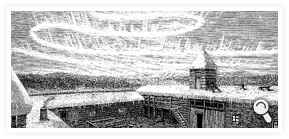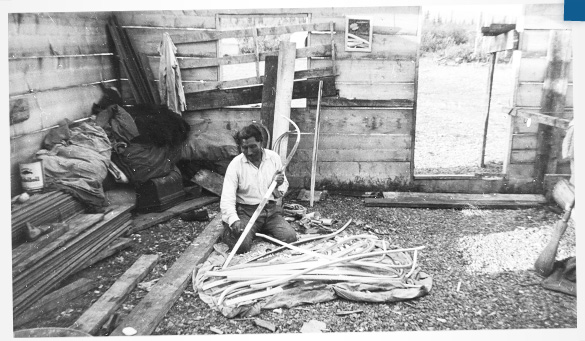
George Sydney making runners for a dog sled, Teslin, 1941.
Yukon Archives, Robert Ward fonds, #8849

Winter shapes the people who live in it. They not only adapt to its challenges, but find inspiration there. Yukoners can find unlimited ways to express their creativity, including snow-sculpting, storytelling and making a pair of snowshoes.
For generations, many First Nations people welcomed the winter solstice as a time when the sun began to move back toward their home. People continue to celebrate winter at events like the Yukon Sourdough Rendezvous Festival, the Frostbite Music Festival and the Rendez-vous de la Francophonie. These celebrations bring people together and celebrate the skills and talent that are found here.
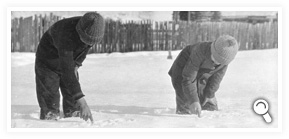
Two boys sign their names in the snow, Ross River, ca. 1928.
Yukon Archives, Claude and Mary Tidd fonds, #7985
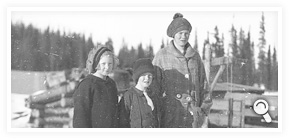
Thelma, John and Margaret Ross, Minto Lake, near Mayo, ca. 1925.
Yukon Archives, Bill Hare fonds, #6708
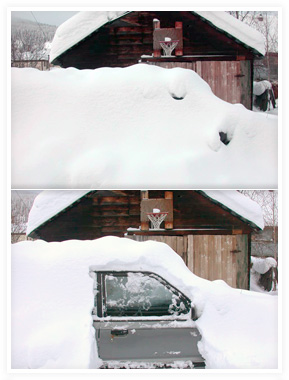
During a residency at the Klondike Institute of Art and Culture, artists Valerie Salez and Hannah Jickling utilized snow as their medium. This is one of a series of 30 before-and-after images.
Valerie Salez personal collection
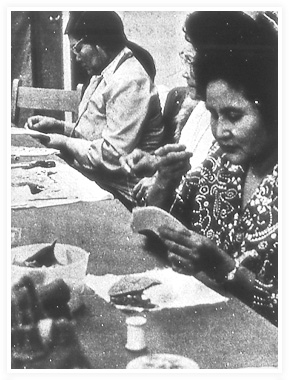
Culture is an important part of the Arctic Winter Games. Fannie Charlie, Joan Njootli and Gertie Tom demonstrate traditional sewing at the 1972 AWG.
Whitehorse Star, March 9, 1972, p.1a

John Scott and Flo Whyard bottling minus-60-degree air near Whitehorse, ca. 1960.
Yukon Archives, John Scott fonds, 89/31, #28

Two soldiers at Kluane Lake camp during the construction of the Alaska Highway, with their frozen laundry, December 1942.
Yukon Archives, Nat’l. Archives of Canada, 88/138 #54
Canada Winter Games
The Canada Winter Games are committed to cultural development as well as athletic competition. Their goals include national and regional exposure for northern artists and promoting awareness of Northern culture.
(Right) Yukon Archives, Arctic Winter Games Host Society fonds, 80/83 #430
